What is 4C hair texture?

4C hair is one of natural hair textures in the hair chart which is used to lead people to the right way when searching for products, techniques, inspiration, and information. People have many different textures patterns of hair and the original hair chart was created by a man and he didn't define 4C as a hair type at first.
In an interview with Elle Magazine he stated that ‘I always recommend embracing your natural texture. Kinky hair can have limited styling options. That's the only hair type I suggest altering with professional relaxing’.
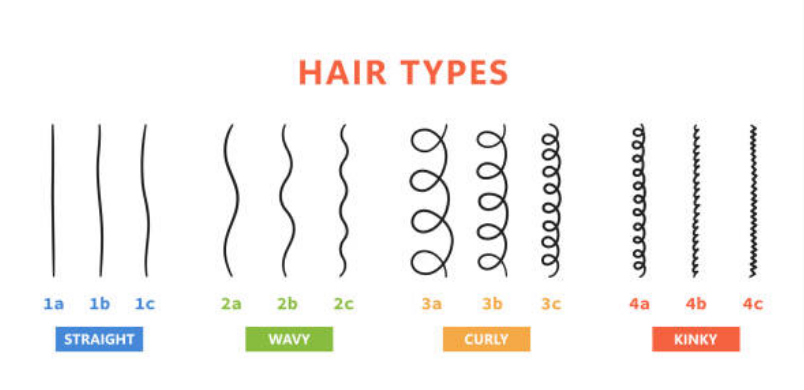
In the modified Andre Walker hair type system, type 4 category was further classified into 3 textures—4A strands have the clearest curl or coil; 4B strands are more of a zigzag pattern without curl or coil; 4c looks very similar to 4A, but the diameter of the coil is smaller than 4A and the shrinkage more than 4A type.

However, there aren’t completely same textures though people all possess 4c hair because genetics, hair porosity, hair density, environmental elements, care and health of different individual can make a huge difference on how the hair looks like.
How should you care for 4C hair daily?

Wash and go.
Don’t manipulate your hair too much. The more your hair is fluffed, combed and manipulated, the less curled definition it usually has.
Keep your hair Moisturized.
4c hair dries faster than other types because the kinks prevent sebum flow through the entire scalp. Low porosity hair which doesn’t do well in absorbing water affects the way hair reacting to product as well. Dry and brittle hair feels soft and looks coil.
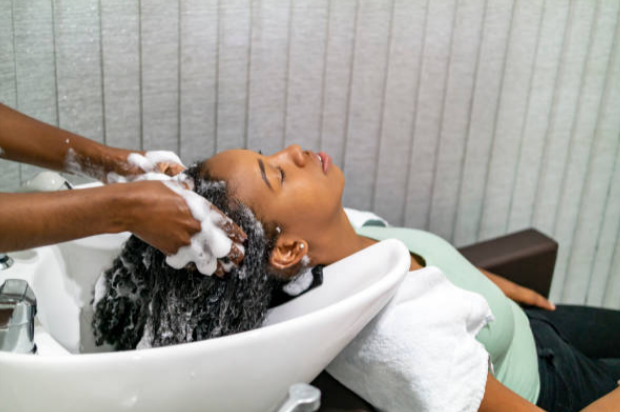
When 4C hair is moisturized, it will have a different look and touch. In order to keep hair shaft soft and malleable, it’s a good way to moisturize your hair with creams and oil so that the water won't evaporate and leave hair dry. Let the gel spread down along hair and keep strand stretched. This process takes a long long time to do, so you need a lot of patience, but the results can last comfortably for up to a week.
Choose best oils suitable for your texture.
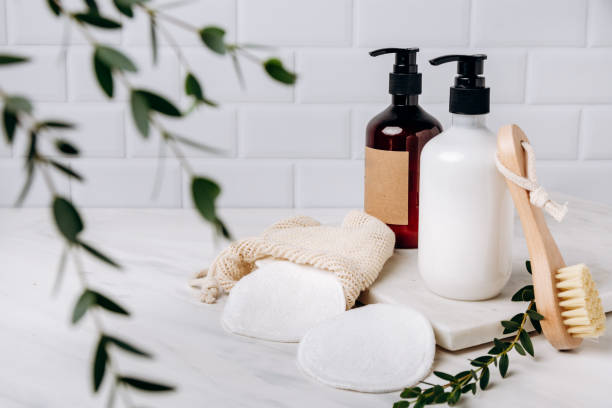
Liquid oils like argan oil, coconut oil, shea butter, olive oil, castor oil,almond oil care optional that you can get easily. It’s better to have a test and make sure your hair porosity in advance. High porosity hair would like thick products like coconut and olive oil while low porosity hair is suitable for lightweight oils such as argan and almond oil.
You can apply them separately to test out which works best for your hair to keep moisture in. Apply the oil when your hair is wet and moisturize for full head, especially the hair ends to make a soft and fluffy effect.
How often should you moisturize your Hair?
No less than 3 times a week. 4c hair texture is usually the most vulnerable hair type and you are supposed to care for your natural hair gentle with more patience.
Can you wet 4C hair every day?
Water may be a good hair moisturizer available which doesn’t take long time to be rinses or sprayed and is easier to manage. But wetting your hair every means that you will apply hair products every day and blowing, styling your hair repeatedly which can increase the risk of hair fatigue. Over manipulating will lead to hair damage and breakage as well.
How the hair grows?
The hair growth usually experience 3 phases in each cycle—anagen, catagen and telogen.
Natural hair cycle starts with the anagen. Hair emerges from that follicles and it begins to grow for about 2 to 6 years. The longer your anagen phase, the longer your hair will grow. Some people have longer anagen phase for up to 10 years.
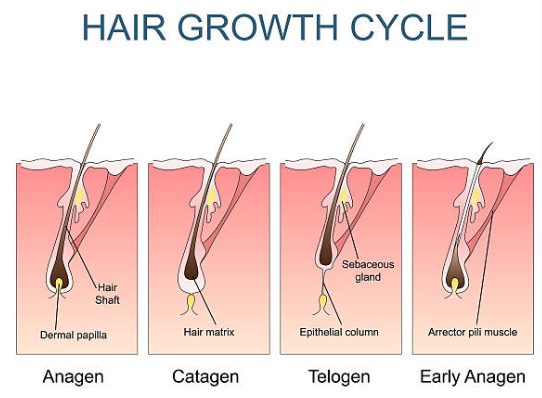
Others have shorter phase which is below the average and their hair can only grow up to about two years depending on genetics. You could take some methods to increase or extend your anagen phase at this period.
Next cycle is a catagen phase which is a transitional stage of your hair and it lasts for about 10 days. your hair detaches from the dermal papilla and turn to telogen phase.
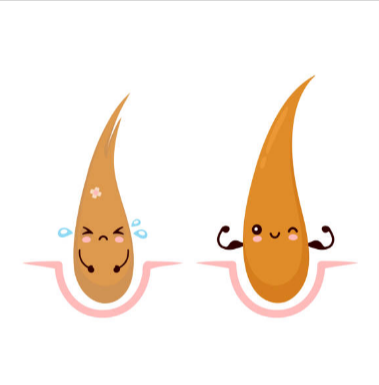
Telogen phase is a rest stage of your hair. The telogen phase lasts for about two to three months after the telogen phase. New hair emerges from the follicle and pushes out the old hair and a whole growth cycle starts again. But this doesn't mean that the hair you already grew is lost.
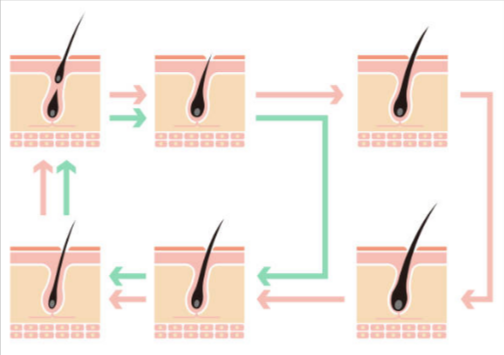
The growth cycle is just practically theoretical and 85% of your hair is always always in the anagen phase while 15% is always in the telogen phase. That is why your hair would always shedding, so that shedding is normal.
What's the best way to grow natural type 4C hair?
Leave your hair alone.
Leave your hair alone after feeding it with water and water based products. For those who use oils for moisture, make sure you have moisturized your hair before you put in the oils because oils are kind of sealants. In your spare time, you can have a cholesterol treatment and a deep conditioning treatment on wash day.
Detangle your hair less.
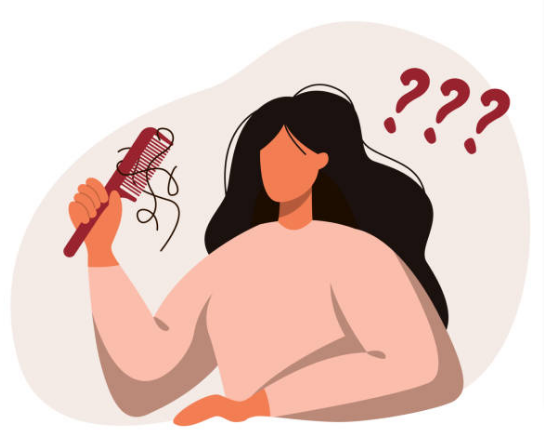
The less you detangle your hair, the better. A lot of naturals suffer unnecessary breakages because 4C hair will coil up automatically when the hair isn't in curly state and they're concerned with getting their hair completely detangled. Just make sure that you separate the tangles enough and your hair isn't going to be matted and tangled back up and cause breakage.
Combine growth oil with protective style.
One of the most important things to do is to make sure that apply oil when your hair during a protective style. There are two reasons why you need to make sure that. It is a waste to have protective styling without applying growth oil to your hair every day. And it really help and make a difference after applying an oil that can penetrate your hair strands and softens your hair. This is also conducive to removing your protective style and you are going to find that you get a lot less breakage and tangling when you're detangling your hair.
Don’t worry about hair shedding.

Don’t worry about hair shedding and breaking because your hair may be actually growing. But if you are suffer from excessive shedding and your hair is more susceptible to breakage, then you should take measures to change. Do not style it too much either.
Do a hair growth treatment.
If you have extra time, try some hair growth treatment or anti breakage mask. Some people also recommend to have moisturizing mask. Hair growth treatments as well as a lot of anti breakage treatments and moisturizing treatments are of great benefit to hair growing which make your 4c hair not only grows quicker but also stronger and can withstand a lot more pressure.
Make sure scalp clean.
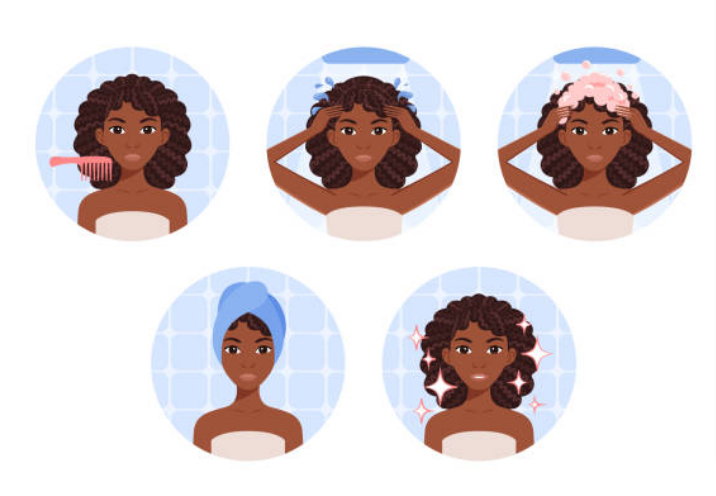
It is important to ensure no build up of products and oils on your scalp. When oils and products amassing on the scalp, they will blocks through hair follicles and if your hair follicles are blocked, there's absolutely no way to grow your hair. If there are flicks and stuff on your hair, they will eventually cause your hair to thin out or break so you're going to end up having pieces of patches. So make sundries away from your follicles.
Trim your hair less than twice a year.
Trimming split of ends is important because they will make your hair weaker and easy to break off but trimming shouldn't be done too often either. Most naturals trim once or twice a year only when needed.
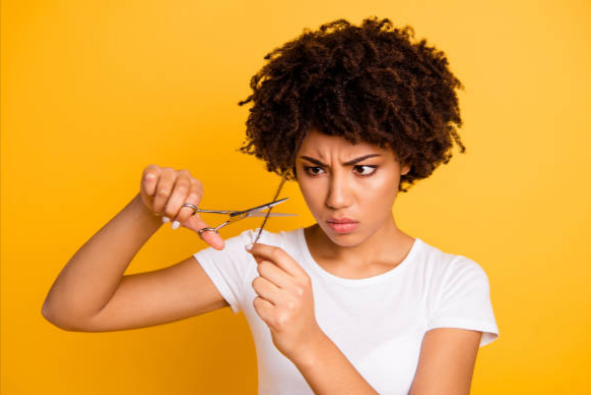
Trim your hair when you notice you have split ends if you are on a protective style journey because your hair is going to grow in a protective style anyways and you ma be trimming away new growing hair because a lot of the hairs on your head do not grow at the same rate.
Have hair massage.
Keep your hands in your hair and massage. You're gonna get more circulation in your scalp and that's actually going to help you grow your hair instead of picking it out. Don’t over-processing your hair and leave the relaxers alone. Relaxed hair isn't healthy because relaxers works by denaturing the protein in your hair. It actually destroys the protein in your hair, and that's how it's able to get it straight.
Stick to natural hair products.
Take natural hair products and do not put chemicals in your hair. You need to make sure that your hair can have the process of metabolism normally especially when you're using heavy gels and products. Because there is going to have a lot of buildup on your hair and when you're trying to put moisture back in your hair, it's not going to actually penetrate your hair shaft. Apple cider vinegar and black tea not only helps to detox natural hair but also helps with reducing shedding and breakage.
How often to detangle 4c hair?
Don't over detangle your hair if not necessary. In general, detangling 4c hair once or twice a week will work best. For someone with wavy hair texture, it's better to section your hair into different parts.

What are the best washing routine for 4C hair growth?
Wash your hair in regular times.
Washing your hair too often will strips natural oils from the scalp. So you don't have to wash it if it feels clean. Rice water strengthens natural hair and makes hair grow faster.
Test your hair porosity.
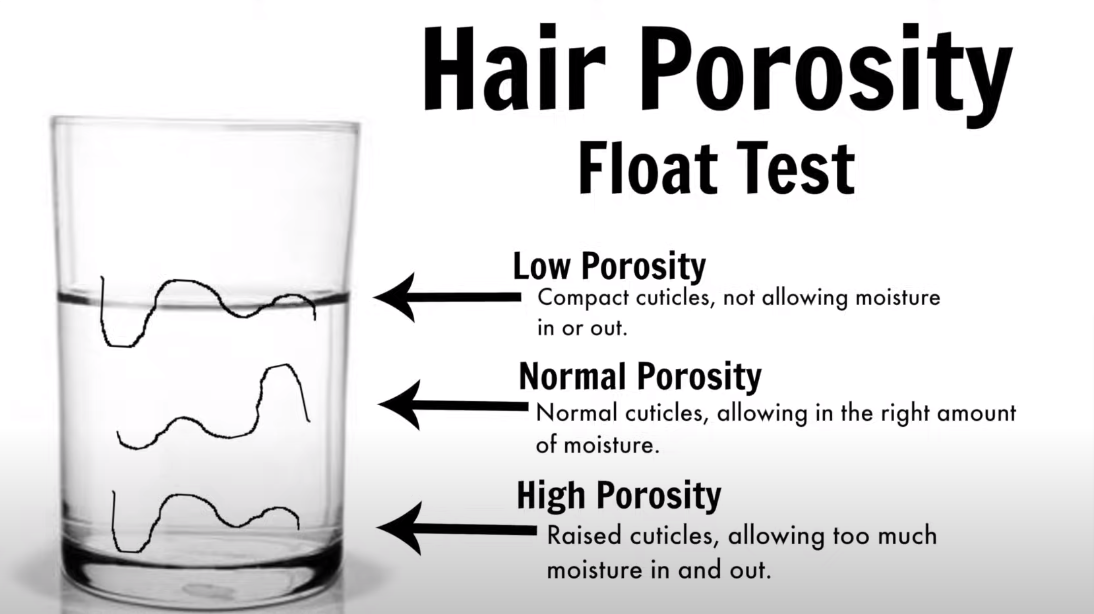
Choose a LOC or LCO method after identifying hair porosity type. “L” means leave in conditioner/treatment. “O” means oil and “C” is cream. LCO method works best for low porosity hair while LOC works best for high porosity hair.
Pre-poo
Pre-poo your hair with an oil and you’ll see the difference when you do it as consistent as you can. There will be less tangles and your hair is less matted. The shampoo will not strip your hair oil and you'll be able to condition your hair even prior to getting into the shower. Use your favorite oil before you get into the shower. Saturate your hair and your scalp, put out the shower cap for about 20 minutes and then proceed to washing your hair.
Deep condition and detangle your hair.
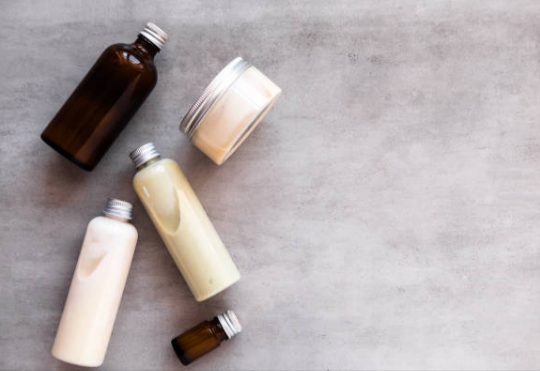
It is imperative to break hair down into sections so that it's easier to deal with in the shower and so that you can make less knots and tangles during the washing process. Detangle your hair with fingers and once the majority of your hair is detangled, go over with a comb and make sure that hair is well detangled.
Using a wide tooth comb especially after you have your hair deep conditioned because your strands are very delicate and small tooth comb may cause breakage. When the water stretch your hair, it's easier to comb through it in the shower while the water is hitting.
Protective hairstyles.
Protective styles like braid ponytail or updos using hair extensions or wigs help reduce frequent manipulation of your natural hair, allowing it to grow peacefully. Be sure not to make your hair too tight, and strive to minimize hair loss as much as possible.
No washing routine is effective all the time and what works for one person might not adaptable to you. Take experiment on your hair. Don't do whatever it does not work for you and find out other ways fitting in. Keep your hair healthy.
What are the best protective hairstyles for 4c hair?
Bantu Knots
Bantu knots are regarded as a protective style for the reason that your natural hair is twisted inside the knots which prevents the hair tip from breakage and keep the moisture in. The earliest group wearing Bantu knots can be dated back to Zulu people in south Africa.
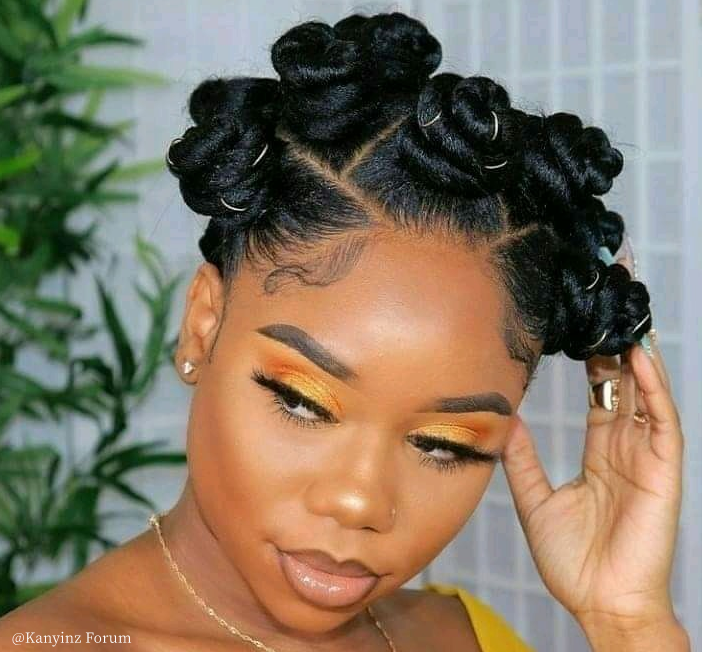
They are created by African women and has always been a representative natural hair styles in natural community. In the last decade, Bantu knots are attributed to the mainstream of hairstyles and has been pursuit by many natural hair people. Bantu knots are created by sectioning your hair into several parts and twisting them into small knots on your head. This protective hairstyle can last 2 weeks.
Goddess braids
Goddess braids are another protective style which is beautiful and versatile. Many braiding methods refer to the image of the mythical heroine. Comparing with well-known cornrows, goddess braids have larger volume and are braided higher. They're usually braided closer to the scalp with your natural hair or hair extension which make it easy for you to take on a wide range of length, volume and colors.
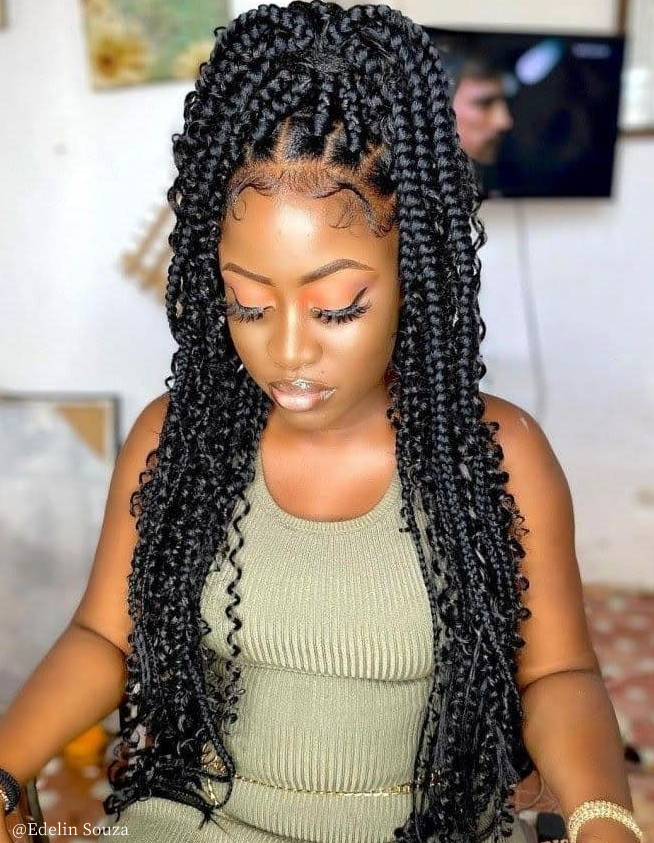
It takes 30 to 90 minutes for installation according to different people and lasts for up to six weeks which is pretty worthwhile to spend time on braiding it. They are adaptable for many occasion from exercising to working while protecting your natural hair.
Senegalese twist
Senegalese twists are one of best protective styles for 4c textured hair in the natural hair community. Each section is created by two strands of hair wrapped around each other which is very similar to a strand of rope and that’s why you may also heard of it as rope twists.
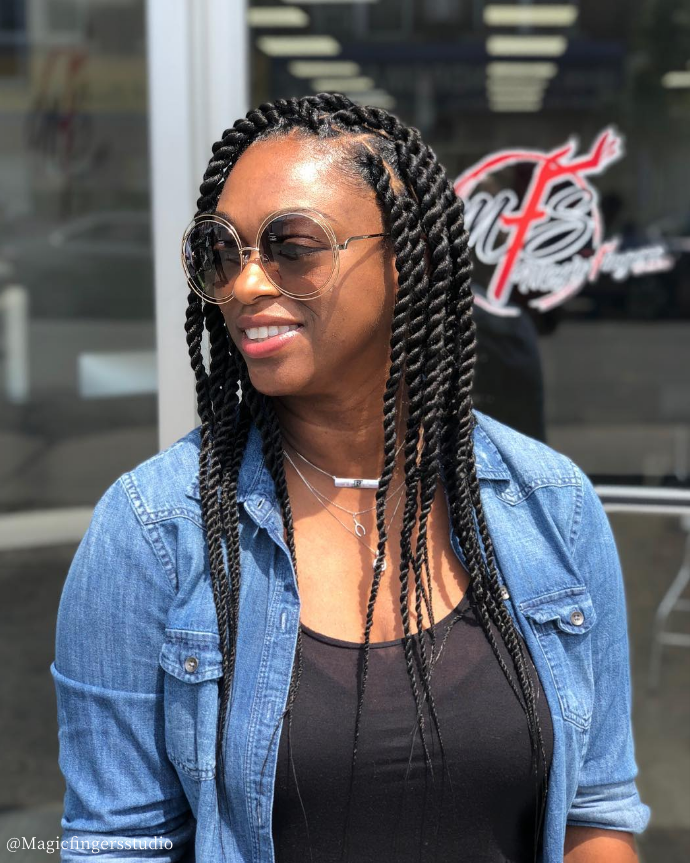
The natural hair is tucked away so as to get rid of hair damages caused from exposing, styling and manipulation. This protective hairstyle can keep 4c curly hair healthy and grow your natural hair. To make the protective hairstyle as much as possible, you can some add hair extensions to get better effect.
Knotless braids
Knotless braids come from box braids but different from normal box braids. Knotless braids are installed in a different way; they are braided from your natural hair and hair extensions are gradually fed in without getting close to the scalp area which will not bring any more headaches.

What’s more, knotless braids also protect your edges and hairline by reducing tensions caused from weight of the whole head hair. For the overall look, knotless braids are seamless and can last up to at least two months depending on your hair texture and how well they are maintained in daily life.
Fulani braids
Fulani braids is also a protective hairstyle as a mixture of cornrows and box braids. The center part is braided into cornrows down the head and several strands are braided in side parts. In addition, Fulani braids are often decorated with beads or other accessories.

You may have seen some people braid their hair with cornrows in the front and box braids in the back. Fulani braids can last five weeks with maintenance. Fulani braids originate from the Fulani people of West Africa. This hairstyle from nomadic tribal is popular for length and patterns with braids staying or looping on both sides.
Faux locs
Faux locs are also one of the popular protective styles by braiding your natural hair or hair extensions and it’ s no more damaging than any other hairstyle that adding hair to your own hair with too much tension on your scalp. It could also be created by crocheting but it may not be such natural.
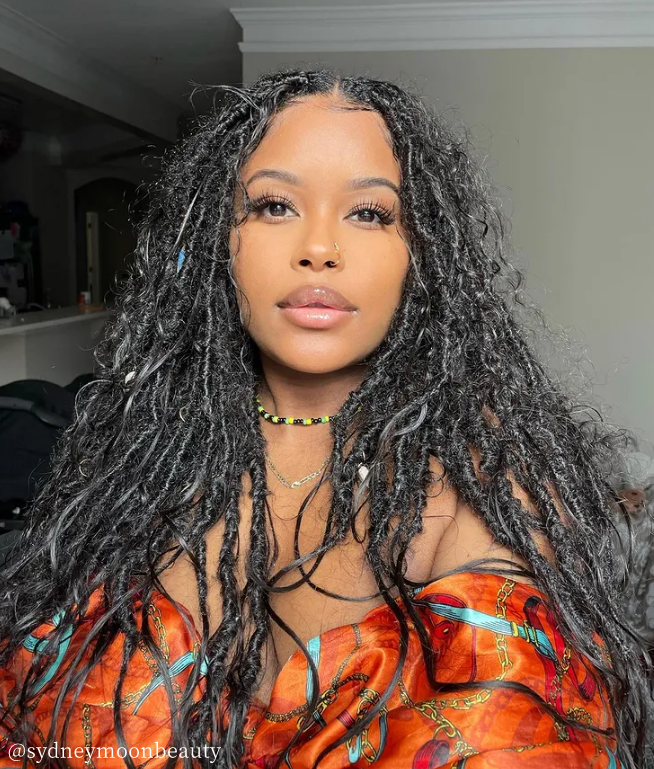
But you should still pay attention to protecting your own hair and assume that no further maintenance is necessary. Your natural hair should still be cleansed, moisturized, and conditioned as usual. Faux locs can be styled to last for four to six weeks.
Jumbo box braids
Jumbo box braids are a kind of the famous African protective hairstyle that divides natural hair into small parts. Anyone with any texture can have jumbo box braids on condition that his hair is long enough to create a braid or with hair extensions.
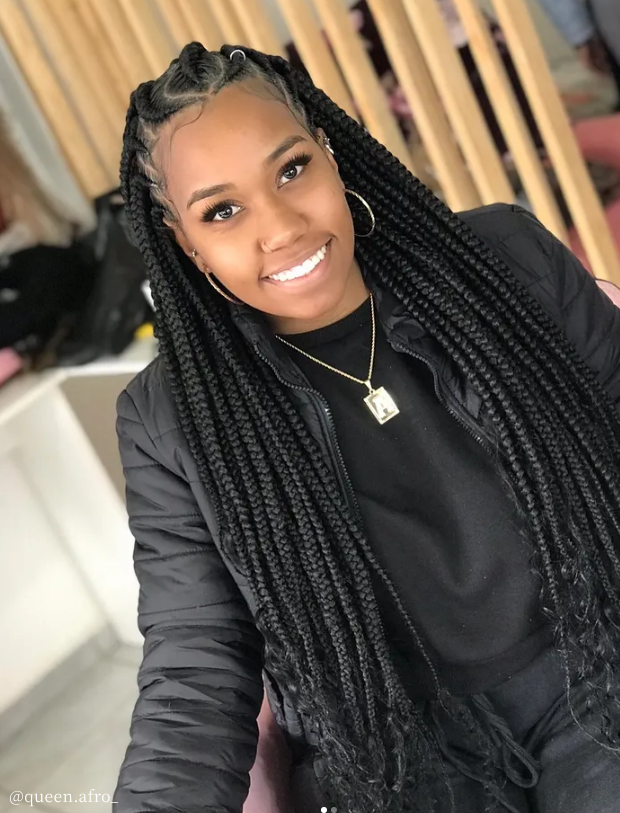
And it requires some time to braid but can keep for a long time. Box braids last a total of four to six weeks without a touch up, provided that maintenance is kept up, including trimming away extension flyaways, keeping edges smooth and hydrated, and ensuring your scalp is healthy in tip-top shape and they can easily surpass other braided protective styles.
Butterfly braids
Butterfly braids are a protective hairstyle that can be created by crochet method and braid or twist way. This hairstyle can last four to eight weeks according to the length and daily care. It takes hours to make butterfly braids to achieve lightweight, natural and seamless appearance.
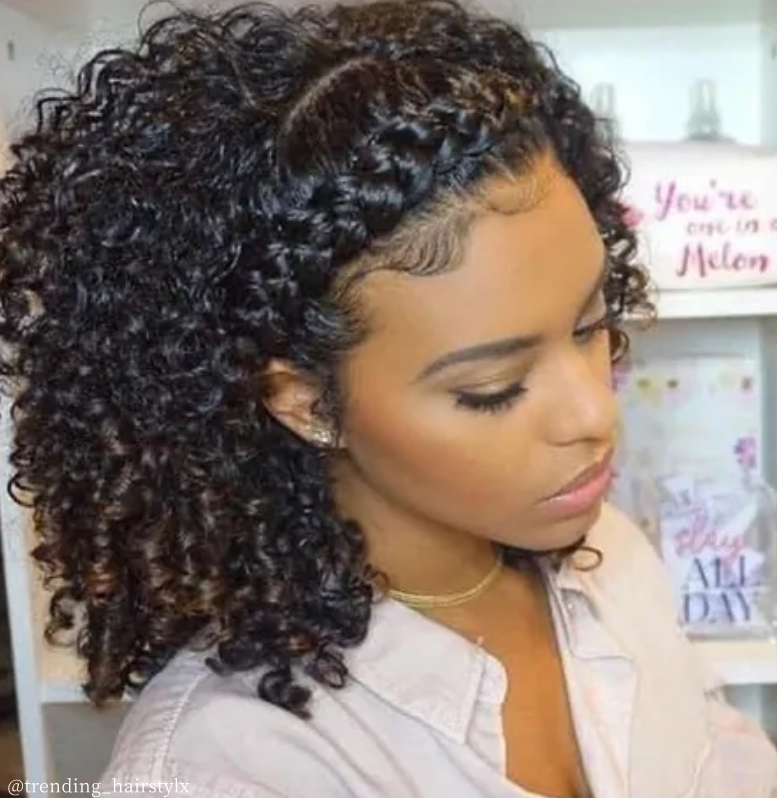
It’s composed of two braids in side parts of your head which feed into one braid in the back and continue to braid after forming the right side part. Butterfly braids combines traditional locs style and distressed style which make the hairstyle look alive.
Crochet Braids
Crochet braids are another versatile protective hairstyle. Crochet braids are also named latch hook braids, which are a special braiding method with a crochet needle. Crochet braids liberate the scalp and edges. They are easy to maintain with regular shampooing, deep conditioning treatments. It’s flexible to change over the length, color, style, and texture.
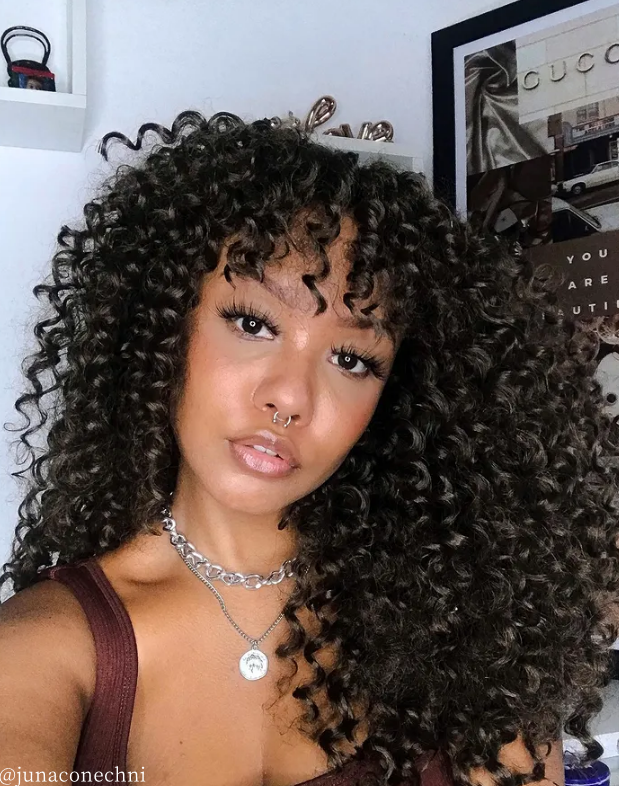
This protective hairstyle is easy to install and there are many different styles that including crochet twist out, water wave crochet braids, and straight crochet braids. Crochet braids can last up to eight weeks with proper care.
Human hair wig
Human hair wig is also a great protective style with high versatility and low maintenance. It saves time and protects the natural 4c hair texture from over-manipulation, external damages as well as moisture loss.
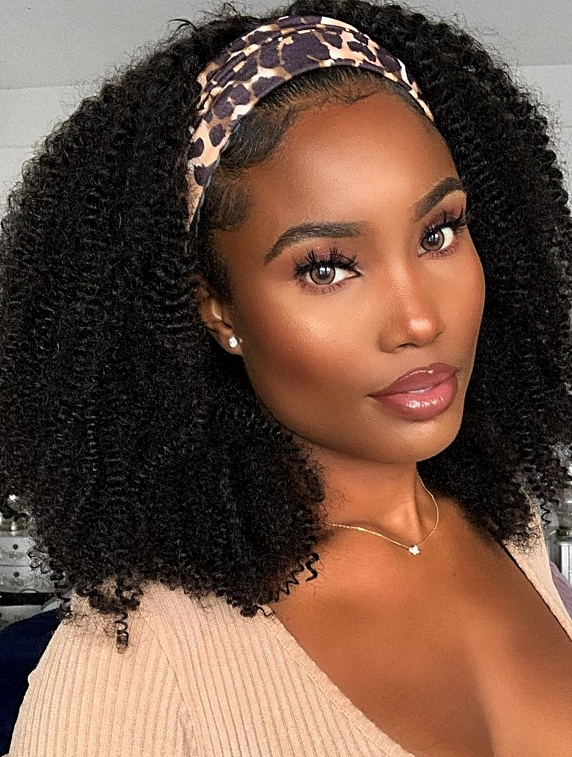
With various human hair wig like u part wig, headband wig and versatile cap wig, a variety of textures, lengths and colors are provided to you depending on how full you want your hair to be. Human hair wigs can last 6 months to a year and if you are keen to switch things up while not damaging your own hair, human wigs are the way to go.



